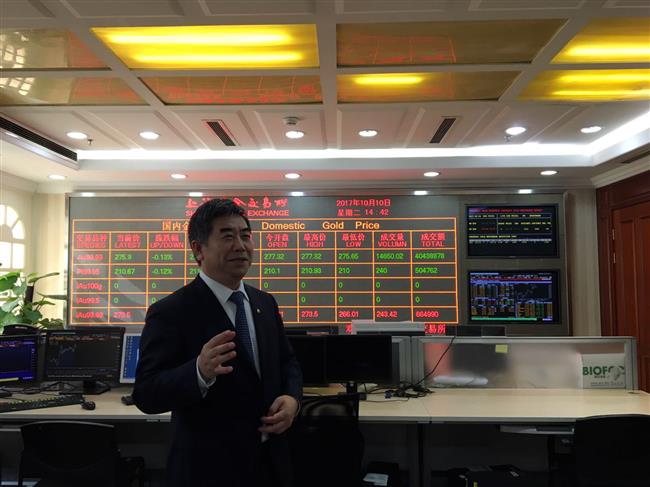Shanghai Gold Exchange aims high on the Belt&Road Initiative
Over 15 years, the Shanghai Gold Exchange (SGE) has evolved into a hub and pivot of the country’s gold market and is now teaming up with more foreign peers.
As the world’s largest gold producer and consumer, China has never played a major role in the global gold fixing until 2016, when it introduced a new pricing mechanism for benchmarking the price of gold.
This landmark move is aimed at building the country's influence in the global market, which has been long dominated by UK and US.
Also known as "Shanghai Gold," the yuan-denominated new contracts enriched the current gold-trading varieties with new standards and trading rules. It enabled the foreign investors to participate in China's rapidly growing bullion trading market.
Due move
It is a natural progression for China to launch a pricing mechanism and is a step in the right direction, according to Alastair McIntyre, president at Malagash Metals and Mining Advisory.
Market insiders and experts said “Shanghai Gold” is now elevating China's position in the international gold market.
The SGE has been the world's largest spot physical gold exchange for ten consecutive years since 2007. However, as the gold price is denominated by the US dollar, market insiders are of the view that the old pricing system cannot reflect the real market situation in different regions.
Till the end of 2016, the exchange had recruited 253 members, among which 69 are international members, including heavyweights like HSBC, UBS and Standard Chartered.
Twelve financial institutions, including the top five state-owned lenders, are listed by SGE as market makers for the "Shanghai fix".
Positioning itself for global pricing, the exchange aims to find price discovery among its members, local or foreign, who are either buying or selling physical gold.
As SGE is primarily a physical market, it suggests that its pricing will represent a true balance of supply and demand, industry observers said.


In the past two years, the exchange has been expanding its partners worldwide, especially along the Belt and Road.
Last March, a Memorandum of Understanding was signed between the SGE and the Hong Kong Exchanges and Clearing Limited (HKEX). The two sides aim to pursue cooperation opportunities in product development and cross-market connectivity.
The bourse also signed an agreement with the Dubai Gold and Commodities Exchange (DGCX) last October, which makes it the first foreign exchange to use the SGE's renminbi-denominated gold benchmark. The contracts began trading this April and was well-received by countries along the Belt and Road.
“We are in talks with other exchanges about similar cooperation. Progress has been made with Moscow Exchange, Bursa Malaysia Derivatives (BMD) and Myanmar Gold Entrepreneurs Association,” said Jiao Jinpu, chairman of the SGE.
“As an integral player in China and global gold community, SGE is committed to innovation and the opening-up of the gold market,” Jiao said.
It also signed strategic cooperation agreements with seven provinces like Guangxi, Yunnan and Xinjiang and helped them to upgrade their gold industry.
“We are now jointly preparing for the Belt and Road initiative gold development fund, along with upstream and downstream enterprises, with a preliminary scale of around 100 to 200 billion yuan,” Jiao said.
“We will try to attract more enterprises and financial institutions along the Belt and Road to use our benchmark price and promote market participants to develop more application scenarios and related derivatives. We are committed to enhancing the influence of "Shanghai Gold" along the route,” Jiao added.
















